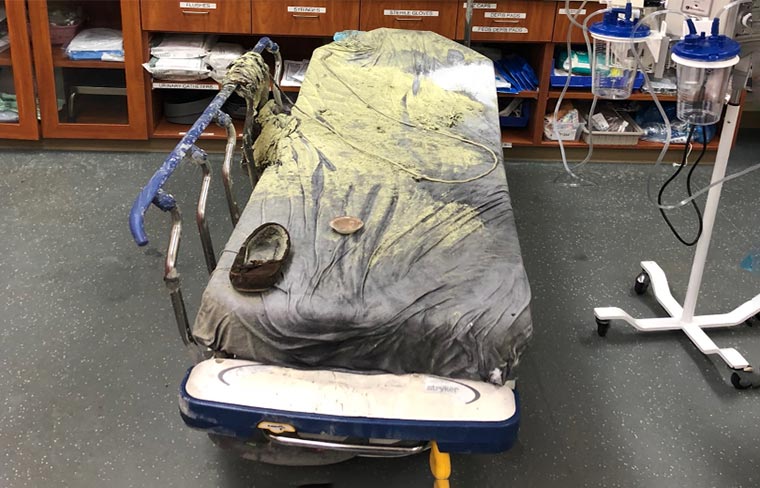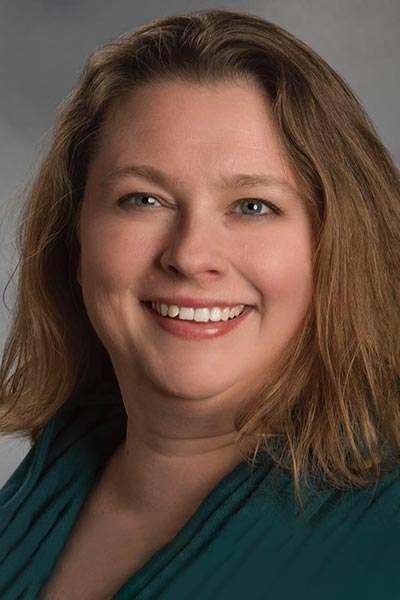
When emergency nurse Naomi Ishioka was asked to temporarily serve as her organization’s disaster preparedness coordinator in November 2019, she accepted the responsibility without much thought. After all, Beaumont Health is in southeast Michigan. She didn’t need to worry about earthquakes, tsunamis or hurricanes.

A few days later, Ishioka was enjoying an evening at home when she received a “code red” page. Fire drills occur in the middle of the night, Ishioka recalled, but this set her on edge. As she waited for the all-clear, she received a second message announcing that the emergency department was closed to ambulances looking to drop off patients.
“We’re a trauma center. Do we close?” Ishioka asked rhetorically. “Never!”
Then she knew it was real. Ishioka soon learned that a patient had caught themselves and their bed on fire. The patient was saved and successfully transferred to a local burn center, but the fire damaged roughly half of the ED.
Ishioka’s presentation at Emergency Nursing 2022, “When the ED Is Burning Down (Literally): Fire in the Unit,” summarized the events of that day, including the immediate response of the staff, activation of incident command, continuing care of the ED patients, cooperation from the hospital administration and lessons learned throughout the recovery process.
The nurse who first noticed the fire recalled the disaster preparedness acronym RACE and successfully followed the guidelines: rescue, alarm, confine/contain and evacuate/extinguish. The team cleared the patient out of the room with the fire and the responding nurse closed the door.
“Believe it or not, it (closing the door) is the right step,” Ishioka said. “This is the reason: Hospital codes say that since the smoke has to rise, it’s going to hit the sprinkler and turn that sprinkler on.”
The entire staff jumped into action based on predefined incident command protocols. Recorded video of the fire revealed the staff took only 38 seconds after the initial alarm to evacuate patients in the affected area of the building. As the sprinklers extinguished the blaze, the ED’s unit secretary called the internal alert system, called security and paged the on-call/house supervisor. The fire department arrived about six minutes after the fire began.
Meanwhile, the charge nurse remained calm and called the house supervisor. They coordinated a mutual plan of action, made sure to close the department to arriving ambulances and delegated tasks. Critically, a group of “sitters” moved behavioral health patients to a safe space and stayed with them throughout the incident. This helped keep the patients as calm as possible and ensured their safety.
Ishioka emphasized the department succeeded by following their incident command protocols. But they learned several lessons.
“We didn’t put a public information officer in the mix at all,” Ishioka said. “The fire department actually made a press release without consulting the hospital, which did cause some grief.”
After an incident like this occurs, Ishioka said, hospital leadership must follow up on the recovery of their staff. She was surprised to see how deeply the incident affected some of her colleagues and led to fear of another fire. Some staff members attended a recovery program to help with anxiety related to the experience.
Ishioka emphasized the need for staff to debrief and officially document “the good, the bad and the ugly” from the emergency response to develop guidelines for a similar incident in the future.
This live-streamed session will be available for on-demand viewing through Jan. 31.
Register Today for Emergency Nursing 2023
Registration for Emergency Nursing 2023 is still open! Level up with ENA and thousands of your emergency nursing peers in sunny San Diego on Sept. 21-23. Attendees can look forward to immersive experiences with hands-on learning opportunities, high-quality sessions, networking events and can’t-miss celebrations sure to propel their careers onward and upward.

